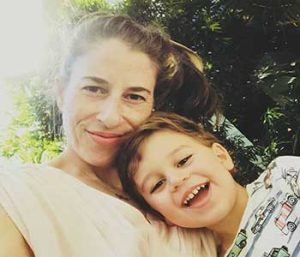Everywhere you turn, mainstream sleep advice is loud: “Follow this routine. Put your baby down drowsy but awake. Teach them to self-soothe.” But here’s the truth:
👉 Your child doesn’t need a script. They need a rhythm that’s responsive, flexible, and rooted in connection.
👉 Sleep isn’t one-size-fits-all. It’s as unique as your child’s laugh, their first words and the way they cling to you when they need comfort.
This isn’t about rejecting structure, I love a good structure! It’s about rejecting the wrong structure. I am all about that and my hope is that more and more families will understand that forcing babies into sleep molds that don’t fit needs to stop.
Why “Cookie Cutter Sleep” Doesn’t Work
- Babies aren’t algorithms. They don’t all run on the same software! We are human first. As such, what calms one baby might overstimulate another.
- Sleep is communication. Cues are signals, not problems to fix. When we miss them, we mislabel normal sleep behavior as “bad” and that is really diverting our attention completely from what really matters the most.
- Rigid methods and / or what is seen as a a ‘rule’ breaks trust. Ultimately, the harder you go against your child’s natural, HUMAN biology, the harder sleep becomes.
Sleep advice that ignores individuality isn’t just outdated, it’s creating attachment scenarios that none of us actually want. Yet the mainstream sleep industry sells us the promises and make the practice sound like there is either no crying or only a little crying. That would work great for a robot, humans on the other hand have emotional connection and those emotions are expressed through tears. It’s how those tears are handled that matter. Not whether there are tears or not.
What Actually Builds Healthy Sleep
Forget the idea that “more independence = better sleep.” Real rest comes from safety, trust, and tuning in.
Here are three shifts that change everything:
- Cues Over Clocks
Instead of obsessing over wake windows, watch your child’s Yawns, eye rubs, zoning out: these matter more than minutes. - Rhythm Over Rules
A rhythm flows and this is the most obvious during the first 4 months of age. Some days naps shift, some nights stretch longer. That doesn’t mean you’re failing; it means your child is human. - Trust Over Training
Babies who feel safe, soothed and responded to even if not instantly “independent”, end up sleeping better long-term. The words LONG TERM are the important part here. Many families who practice Cry-It-Out will say ‘it works and fast. Research does show it does work, and in terms of how fast, not any faster than doing things in an emotionaly supportive manner. The only difference? Long term, your child has not learnt that when they need you, you are there. Instead, they have learnt that when they are in distress, no one comes to help and they can only count on themselves. Safety isn’t a crutch, it’s a foundation.
A Quick Exercise: Map Your Child’s Rhythm

Grab a notepad and track for 3 days:
- When your baby shows sleepy cues (not just when the clock says nap time).
- What helps them settle fastest (feeding, rocking, darkened room, white noise, touch, etc.).
- How long they naturally sleep when you don’t interrupt.
After 3 days, look for patterns. That’s the foundation of your child’s rhythm. I strongly urge you not to take a a stranger’s checklist from the internet as a way forward.
The Rhythm Tracker (Free Worksheet)
The blog you just read is the why. Now here’s the how.
Download the Rhythm Tracker Worksheet to put this into action:
- Step-by-step prompts for observing and decoding cues.
- A printable rhythm tracker template with space for 3 days of notes (times, cues, what helped settle, length of naps/night stretches).
- A reflection section where you’ll highlight emerging patterns.
- Gentle science-backed shifts you can try this week.
This way, you leave with something you can use — not just something to read.
Final Word
Mainstream advice sells control. But real rest comes from trust + connection + rhythm.
This is sleep done different. And it works not because it’s magic, but because it honors the human in front of you.









